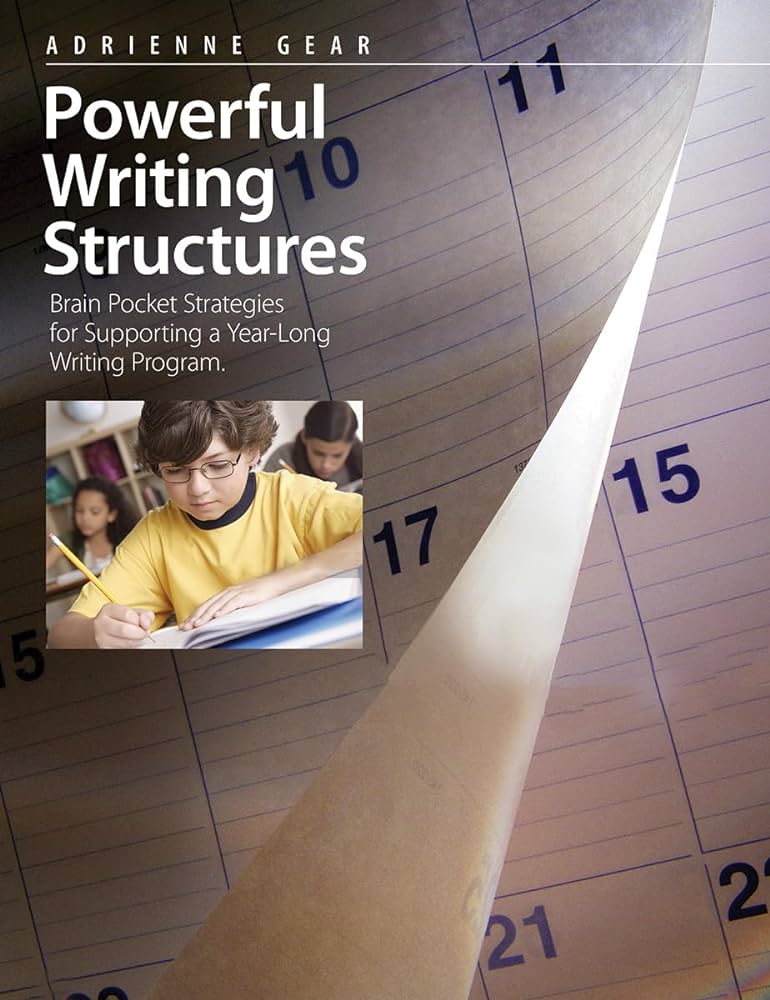Brain Pocket Strategies to Support a Year-Long Writing Program
By Adrienne Gear
I became familiar with this resource during my first practicum. I was in a grade 2/3 split class and my coaching teacher suggested that I follow Adrienne Gear’s writing structure.
Gear recommends a 3 day writing structure. The first day is for planning, the second is for drafting, and the third is for editing and revising. I implemented this structure in the first week of practicum and continued it in the second and third weeks. After the first week, I adjusted the independent work portion to be half writing, with all students adding more to their drafts from the previous day, and the second half they could choose to continue writing or edit/revise their work.
The book is seperated into three sections based on Gear’s concept of “brain pockets.” The first is based on the memory pocket, so the topics relate to real experiences students have had. They pull from their memory pockets rather than making something up. The second section is the fact pocket and focuses on non-fiction writing. The third section is based on the imagination pocket and writing stories. Each section has suggested topics and focuses with corresponding anchor books. There are also many mini lessons and templates for planning pages that suit the type of writing being taught from each “brain pocket.”

As explained by Gear, the memory pocket is the easiest for kids to write from with fact writing being a bit harder and story writing being the hardest of the three. She recommends spending a term working from each pocket in the same order they are arranged in the book. With that in mind, the three weeks of writing I taught during practicum were all based on the memory pocket section of the book, although the second week was based on an imagination topic recommended in the memory pocket part of the book. It was easy for the students to try because they were walking stories rather than event stories.
The mini lessons were always done on the second writing day of the week, draft day, and I chose the topic based on the gaps that I saw in their writing the week before. Due to the short length of practicum, I didn’t conference with students individually, as per Gear’s recommendations, but I considered the class’s writing as a whole when considering what mini lesson to teach. The first week, I taught a mini lesson about dialogue but after reading thier writing at the end of the week, I focused on adding details for the mini lesson the second week. I expanded on adding details in the third week because, although their writing had improved, it was helpful to give them another opporuntiy to focus on details.
Implementing this structure in the classroom created a writing routine that the students were able to predict and they understood that each topic provided a new opportunity for them to practice their writing. It also helped streamline my planning because after going through the structure during the first week, it was more simply to just choose a new writing topic and mini lesson. The results of this structure were so positive that my coaching teacher said she planned to continue the structure for the rest of the school year.

Leave a Reply